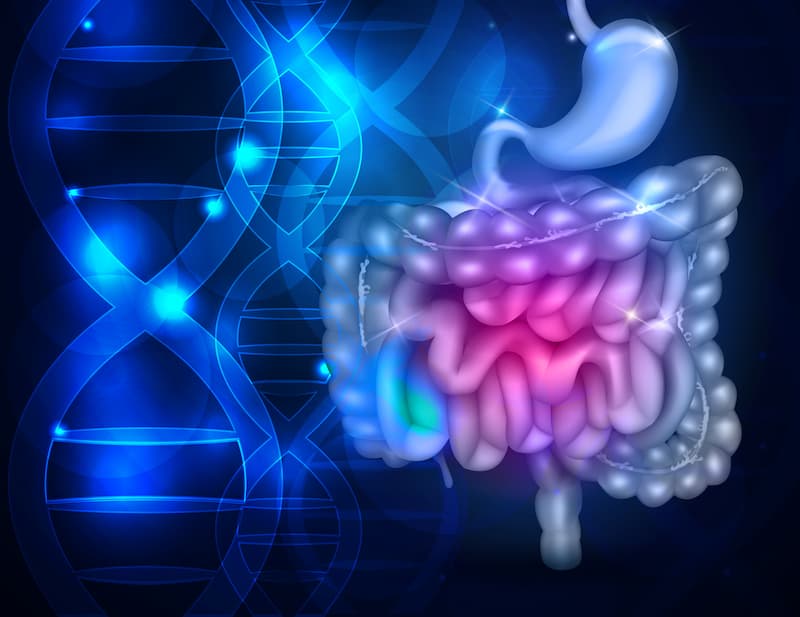Total Gastrectomy Associated with Long-term AEs in CDH1 Variants
Risk-reducing total gastrectomy is associated with short-term and long-term physical and emotional AEs in patients with pathogenic or likely pathogenic germline CDH1 P/LP variants.
In terms of chronic AEs, bile reflux was the most common, with 73.5% of patients reporting some grade of AE. Severe and very severe bile reflux occurred in 19.1% and 5.9% of patients, respectively.

Risk-reducing total gastrectomy (RRTG) is associated with long-term adverse events (AEs) in patients with pathogenic or likely pathogenic germline CDH1 P/LP variants, according to an observational study (NCT03030404) published in the Journal of Clinical Oncology.1
Despite being a common and accepted treatment for gastric cancer, the study found that 94% of the patients who received an RRTG at least 2 years before analysis reported experiencing at least 1 chronic complication, which included bile entering the esophagus, dysphagia, and problems absorbing certain nutrients.
“We do this [operation] to prevent cancer and help people,” Jeremy Davis, MD, lead study investigator and surgical oncologist at NCI’s Center for Cancer Research, said in a press release regarding the study.2 “Patients return to the clinic and say they feel okay, but all you have to do is sit with them for a little while and stuff comes out; problems with family dynamics or not being able to get through the workday because of symptoms.”
This study included a total of 126 patients who received an RRTG to prevent hereditary diffuse gastric cancer between October 2017 and December 2021, and 68 patients were followed for at least 2 years post-surgery. Patients had a median age of 43 years (range, 19-71) and were mainly women (75%) and White (97%). Most patients (96%) had a familial history of gastric cancer, and 67.5% had a familial history of breast cancer. Regarding CDH1 variants, splicing variants were most common (43.7%), followed by nonsense (25.4%) and frameshift variants (23.0%). Patients were excluded from the study if they had CTNNA1 variants.
Data was collected using comprehensive clinical questionnaires, which were administered a minimum of 2 years post-surgery, and in 1-on-1 interviews with patients. The National Institutes of Health Healing Experience of All Life Stressors (NIH-HEALS) questionnaire was administered to patients before surgery and then at 1, 3, 6, 12, and 24 months after RRTG. This questionnaire was to look at psycho-social spiritual healing.
Postoperative complications occurred in 18.3% of patients, however, there was no mortality. Complications that were most frequently related to esophagojejunostomy anastomotic leak. Readmission rates to the hospital postoperatively were 7.1%, and reoperation or procedural intervention within 30 days occurred in 5.6% of patients.
After RRTG, weight loss was reported in 98.4% of patients who were below their preoperative weight at 12 month post-gastrectomy. There was a median body mass index (BMI) change of –8.1 kg.m2. At 12 months post-gastrectomy, 68.3% of patients had a normal BMI, 15.1% were underweight, 11.1% were overweight, and 5.6% were obese.
Feeding tubes were given to 8.7% of patients. The criteria for receiving one included failure to thrive (n = 5), esophageal anastomotic leak (n = 5), and persistent dehydration (n = 1).
In terms of chronic AEs, bile reflux was the most common, with 73.5% of patients reporting some grade of AE. Severe and very severe bile reflux occurred in 19.1% and 5.9% of patients, respectively. A total of 22.1% of patients reported feeling food stuck in the esophagus, 2 of which had an anastomotic stricture of the esophagojejunostomy site that required dilation. In addition, episodic early- and late-dumping syndrome was reported in 32% and 44% of patients, respectively.
In addition to physical AEs, psychological effects were analyzed. Investigators reported that 22% of patients experienced a preoperative generalized anxiety disorder, depression, or bipolar disorder, with 4 patients reporting anxiety specifically related to the CDH1 P/LP variant diagnosis and 5 reporting a new diagnosis of depression or anxiety after RRTG.
Quality of life was affected after RRTG as well. This included 23.5% of patients reporting an employment change mainly due to AEs, such as nausea, fatigue, or an inability to eat frequent meals. One patient reported developing an alcohol dependence, and 2 patients reported getting a divorce after surgery.
Researchers are attempting to find alternatives to gastrectomy to circumvent the AEs that are associated with the procedure. This could include frequent monitoring through endoscopy, surveilling patients’ biopsies, and blood samples, and studying cancer-like cells to identify potential targets for drugs.
References
- Gallanis AF, Gamble LA, Samaranayake SG, et al. Costs of cancer prevention: Physical and psychosocial sequelae of risk-reducing total gastrectomy. J Clin Oncol. Published online 2023. doi:10.1200/jco.23.01238
- Removing stomach to prevent cancer has lasting consequences. National Cancer Institute. News release. January 12, 2024. Accessed January 17, 2024. http://tinyurl.com/247rydxc